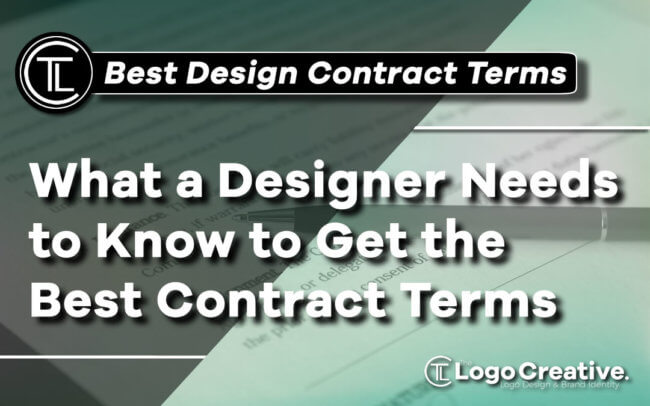When first starting out in business, many designers don’t know how to get the most out of their contracts. Feelings of unworthiness and even desperation can get a designer agreeing to loss-making agreements. In this article we discuss What a Designer Needs to Know to Get the Best Contract Terms
Onsite negotiation skills training can equip designers to manage their contract terms better. Knowing what to expect and how to react can boost the outcomes of your negotiations. Here are nine pointers every designer needs to know to score the best contract terms.
Table of Contents
Planning Sets You Up For Success
Most designers have well-developed planning skills. The problem is, even though designers plan well for the job at hand, most don’t use their planning skills to prepare for negotiations.
Planning for negotiations can reduce unknowns and lower anxiety levels. Make a list of what you want out of the deal and what you don’t want. List the must-haves of the agreement and have a separate list of what you consider optional. The more specific your list, the better prepared you can be when you meet your clients.
As you plan for what you want, also ask yourself what you’re prepared to give up. What are the concessions you’re willing to make to close the deal? What would you claim in exchange if the client asked for a concession? For instance, if the client asks for a faster timeline, would you ask for higher pay?
Negotiation Is About Value Creation
When negotiating a contract, designers should aim to create more value and get more in return. For example, your client may ask for a logo design. Negotiation provides you with an opportunity to upsell your client on a complete branding package.
The new contract may involve many design products such as logos, website, merchandise, and other marketing materials for a stronger corporate identity.
Apart from upsells, other values you can exchange during negotiations include:
- Cross-sells: For instance, when a client approaches you for web design and you persuade them to agree to email newsletter designs and social media page designs.
- Referrals: Create positive connections. When the client hears of someone else who needs a designer, your client is likely to recommend you.
- Testimonials: Satisfied clients will be happy to help you spread the word about your awesome designs.
Applying Leverage Boosts Your Value Exchange
Consider the case of Sally, an experienced web designer. Sally has had lots of successes with small and medium-sized businesses. When Sally finally landed her first big corporation, she was excited.
The corporate client wanted a redesign of their brand to launch at an upcoming event. This contract would launch Sally’s firm to be at a more profitable level.
Sally’s firm was the only design company considered for the job. Her skills were a perfect match, and she was a perceived expert. The unveiling of the new brand was in 15 weeks, and there was no time for the corporate client to source a new design firm.
When Sally presented her fee proposal, it was immediately approved. Yet, when she met the client team during the discovery phase, one of the directors insisted on a 20% discount. The director also demanded payment terms of 120 days after completion. Sally was confused about the new conditions. Afraid of losing the contract, she agreed to a 15% discount and 90-day payment terms.
Sally’s is a classic example of how so many designers fail to leverage their strengths. Sally was unable to win a favourable deal because she let the client take advantage of her. She seemingly forgot to leverage her expertise. Also, time was on her side since the client couldn’t source a new design firm in time for the launch date.
Leveraging your strengths isn’t about taking advantage of your client. Leverage allows you to create and claim more value. If Sally had stuck to her guns, the client would have likely upheld their earlier agreement and paid in full and on time. Now Sally has to work with a smaller budget and wait longer for compensation.
Understand Others’ Motivation When Creating Your Offer

Many designers focus on the outcome when negotiating new contracts. However, designers should first understand their client’s motivations. Why do your clients need your service? Why do they need a new design? Why does the client insist on a particular style, colour, or timeline? What are your client’s biggest pains and biggest fears?
Outcomes and objectives are the ‘what’, while the motivation is the ‘why’. Without knowing the why, the designer may merely be guessing at what might please the client. Knowing the why, the designer can leverage on the right skills. The designer also gains more confidence when creating an offer and delivering solutions. In turn, the designer will likely produce better offers and negotiate better contract terms.
Asking for More Is Not Greed
Many designers feel conflicted asking for more money or better terms. The truth is, you’re not greedy or selfish by charging more for your services.
By feeling too shy to charge enough, your business will not last long enough to support those who need your expertise. Charging what you deserve ensures you can fulfil your contract requirements.
Consider charging more to attract premium clients, who are most likely to appreciate your work. By charging more, you are likely to enjoy your work more, produce better quality, and work with a highly motivated team. Also, asking for more enables you to train for better output and to satisfy customers.
While you do need to be careful not to price yourself out of the market, the client will seldom offer to pay you more than your quoted rate. You can always make a concession on a higher rate, and you can expect a concession in return from your client.
Visual Aids Sell Ideas

Few non-design professionals will easily understand your design concepts. Visual aids can communicate your ideas better and faster than verbal descriptions.
Visual aids work to express critical data in simple terms. A well-presented visual aid can attract the attention of a distracted audience. For the best visual aid, you can:
- Use simple graphics with large numbers, basic colours, and simple shapes.
- Use short points to explain ideas.
- Identify and express areas where you are better than your competition.
- Communicate overall value benefits.
Also, while you should address multiple selling points, focus your messaging on one single benefit that will resonate with your prospect.
Don’t Compromise on Quality
It’s likely that at least some of your prospective clients will want to negotiate the price down. Avoid making the mistake of compromising on your work quality.
For instance, it’s common for designers to remove some design elements to adjust to a lower price. It’s okay to reduce the number of deliverables. However, avoid watering down the overall quality. Some non-essential design items to remove might include mock-ups, revisions, or the project timeframe.
When you submit a job of lower quality than you’re capable of, it sends the wrong signals. Firstly, new prospects might think that’s your usual quality level. Secondly, clients will expect you to work at that lower rate for all upcoming projects even if your output will be of higher quality. Thirdly, your brand will be associated with low-quality designs. You may lose out on a market segment that appreciates high-quality work and is ready to pay premium rates.
Always Have a BATNA
Having a BATNA (best alternative to a negotiated agreement) means having a backup option in place. When going into negotiations, it’s ideal for designers to have a great alternative lined up in case they can’t come to an agreement with the prospective client. Having a BATNA makes it possible for the designer to confidently walk out if the client’s offer is too low.
Let’s get back to the example of Sally and her design company. When Sally was negotiating with the big corporate, she was also talking with two mid-sized prospective clients. She had to stop pursuing the other two prospective clients since working with the new big client was going to take her whole team’s focus for the next 15 weeks. She should have probably held on to the other two clients until she signed the final agreement with the big corporate client.
If Sally hadn’t given up the other two contracts, she would have been in a better position to say no to the changes made by the big client. Sally could have been more confident saying no to the new payment terms and the 20% discount. Knowing she could go back to the two clients and work at premium rates would have been a confidence booster.
Rehearsing Builds Confidence
Rehearing your negotiation key points can build your confidence. The goal of rehearsing is to find errors, identify blind spots, and adjust your pitch before you meet with clients.
During negotiation skills training, experts work with trainees in simulated environments. Simulated role-playing can shore up trainees’ confidence and assist in honing responses. Negotiation simulation games can support designers in:
- Developing mutually advantageous terms and contracts.
- Developing consensus-building when creating design concepts with clients.
- Forming strategic partnerships while focusing on long-term relationships.
- Expressing high-level concept ideas in a way that clients can accurately visualise.
Conclusion
Negotiating prices and contract terms can be difficult for most designers. Yet, the more you practice, the more at ease you can be when asking for more. Negotiating ensures you get paid what you’re worth. The negotiation process also helps you create more value for your design clients. Knowing how and when to negotiate can keep your business running, so you get to support more businesses in achieving their goals.
We hope this article about What a Designer Needs to Know to Get the Best Contract Terms has been helpful, and be sure to leave your comments below as we love hearing from you the reader!
Useful Links & Great Deals


